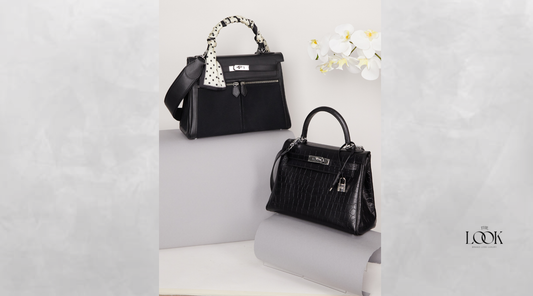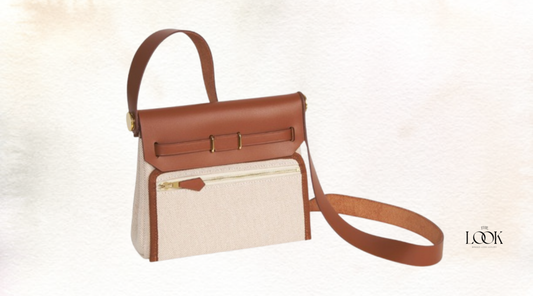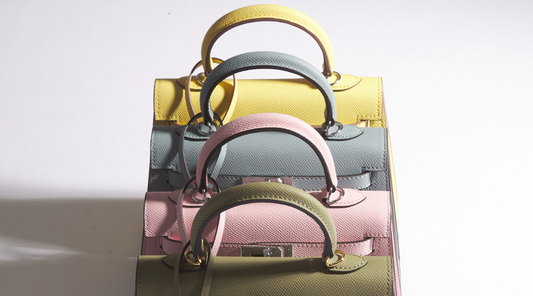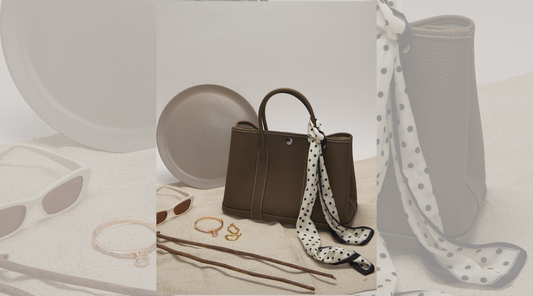Leather bags are more than just accessories; they’re companions that carry stories, moments, and a bit of our personality wherever we go. Whether it’s the designer tote you saved up for, a chic crossbody you wear daily, or a treasured vintage find, proper storage makes all the difference in how long your bags last and how beautiful they remain.
Today, we’ll explore how to properly store leather bags at home in a way that’s simple, practical, and caring. Think of this as giving your bags their own spa retreat while they’re not in use.
Key Takeaways
-
Always keep leather bags in a cool, dry, ventilated area—never near direct sunlight or heat.
-
Clean and condition bags before storage to keep leather soft and healthy.
-
Use dust bags or cotton pillowcases instead of plastic containers.
-
Stuff bags with soft, clean materials to help maintain their shape.
-
Rotate bags seasonally to give them air and prevent long-term creasing.
-
Avoid overcrowding or stacking bags, as this can cause scratches and misshaping.
-
Monitor humidity to protect against mold and cracking.
1. Choosing the Right Spot
Location is everything when it comes to leather care. Leather is a natural material, and like skin, it reacts to its environment. Storing your bags in places that are damp, hot, or exposed to light can shorten their lifespan dramatically.
The best place to store leather bags is in a closet, wardrobe, or storage cabinet where the temperature is stable. Avoid basements or attics, which tend to be either too humid or too dry. Keep bags out of direct sunlight, since even soft, indirect rays can fade the color and dry the leather over time.
If your storage space tends to get stuffy, crack the door or use breathable containers. A little ventilation goes a long way toward keeping your leather fresh.
2. Clean and Condition Before Storage
Before tucking your bag away, always make sure leather bags are clean. Dust, oils, or traces of makeup left on the leather can stain or age it prematurely. Start with a gentle wipe-down using a soft, lint-free cloth. If your bag has smudges or dirt, a small amount of leather-safe cleaner can be applied, but always test on a discreet corner first.
After cleaning, condition the leather. Just like moisturizing your skin before bed, conditioning helps maintain flexibility and prevents cracks. Use a cream or conditioner designed for leather, and apply it sparingly. Let it absorb for a few minutes, then buff gently with a clean cloth.
This step not only restores shine but also adds a protective layer, preparing the bag for its little “vacation” in storage.
3. Stuffing Bags to Maintain Shape
One of the biggest heartbreaks of improper storage is a saggy or misshapen bag. To keep your bag’s structure intact, give it a little support from the inside.
Fill your bag with soft, breathable materials—think clean cotton t-shirts, white towels, or acid-free tissue paper. These fillers help maintain the bag’s silhouette without stretching it. Avoid using newspaper, as the ink can rub off and leave stains. Bubble wrap can work too, but only if wrapped in fabric to avoid sticking.
If your bag has delicate handles or straps, tuck them inside the bag before storing. This prevents stretching, bending, or creasing over time.
4. Dust Bags Are Your Best Friend
When it comes to how to properly store leather bags, the golden rule is leather needs to breathe. That’s why dust bags are essential.
Most designer bags come with their own dust bags, but if yours didn’t, don’t worry. A cotton or linen pillowcase works just as well. The key is to choose something breathable that shields your bag from dust but still allows air circulation.
What should you never use? Plastic. Plastic suffocates leather, trapping moisture that can cause mildew, odors, or sticky residue. Think of leather as needing a breathable blanket, not a sealed container.
5. Seasonal Rotation and Regular Check-ins
Storing your bags doesn’t mean forgetting about them. Leather is a living material that benefits from attention. Every month or so, open up your storage space and check on your bags. Take them out, give them a light wipe, and let them breathe for a few hours before putting them back.
If you live in a humid area, consider slipping a small pouch of silica gel or activated charcoal into your storage space. These absorb excess moisture and keep your bags safe from mold. Just make sure the packets don’t come into direct contact with the leather.
Rotation is another great habit. If you have several leather bags, don’t always use the same one. Rotating helps your leather bag collection age evenly and prevents overuse of one favorite piece.
6. Avoid Stacking and Overcrowding
It’s tempting to save space by piling bags on top of each other, but leather needs its personal bubble. Overcrowding or stacking can cause scratches, color transfer, and distortion of shape.
Instead, line your bags up neatly on a shelf, giving each one enough room to stand upright. For larger totes, you can use shelf dividers to keep them separated. Smaller bags can be placed in individual cubbies.
If you must stack, place soft fabric or a piece of felt between bags to prevent friction. But whenever possible, give each bag its own breathing space; it’s worth it.
7. Monitor Temperature and Humidity
The last piece of the puzzle in how to properly store leather bags is keeping an eye on the environment. Leather thrives in balance; it doesn’t like to be too dry or too humid.
Dry environments can cause cracking, while overly humid ones invite mold. Aim for moderate humidity, ideally around 40–60%. If your home tends to be on the drier side, you can place a small bowl of water in your storage area to add gentle moisture. In humid climates, a dehumidifier or moisture-absorbing packets will help.
Think of this as creating the perfect mini climate for your collection. When the environment is right, your bags will remain supple, soft, and stunning.
Conclusion
Your leather bags deserve love, even when they’re not in your hand. Proper storage is about more than just keeping them dust-free; it’s about protecting an investment, preserving beauty, and ensuring these timeless pieces stay with you for years to come.
By following these seven simple tips—choosing the right spot, cleaning and conditioning, stuffing properly, using dust bags, rotating, avoiding overcrowding, and monitoring the environment—you’ll master the art of how to properly store leather bags at home.
And here’s the best part: when you pull out that bag for your next outing, it’ll look and feel just as gorgeous as the day you fell in love with it.
Frequently Asked Questions
Can I store my leather bag in a plastic bin?
It’s not recommended. Plastic containers trap moisture and prevent airflow, which can lead to mold and musty odors. Stick with breathable dust bags or fabric covers.
How often should I condition my leather bags?
A light conditioning every few months is usually enough, especially before and after long storage periods. For bags used daily, you might condition a bit more often.
What can I use if I don’t have a dust bag?
A clean cotton pillowcase works beautifully. Just make sure it’s free of dyes or prints that could transfer onto the leather.
Is it okay to hang leather bags by their straps?
Not for long-term storage. Hanging by straps can stretch or warp the leather. Store bags upright on a shelf instead.
Can I store leather bags in the box they came in?
Yes, as long as you skip the plastic wrapping inside. Wrap your bag in a cotton dust cover first, then place it in the box for extra protection.






